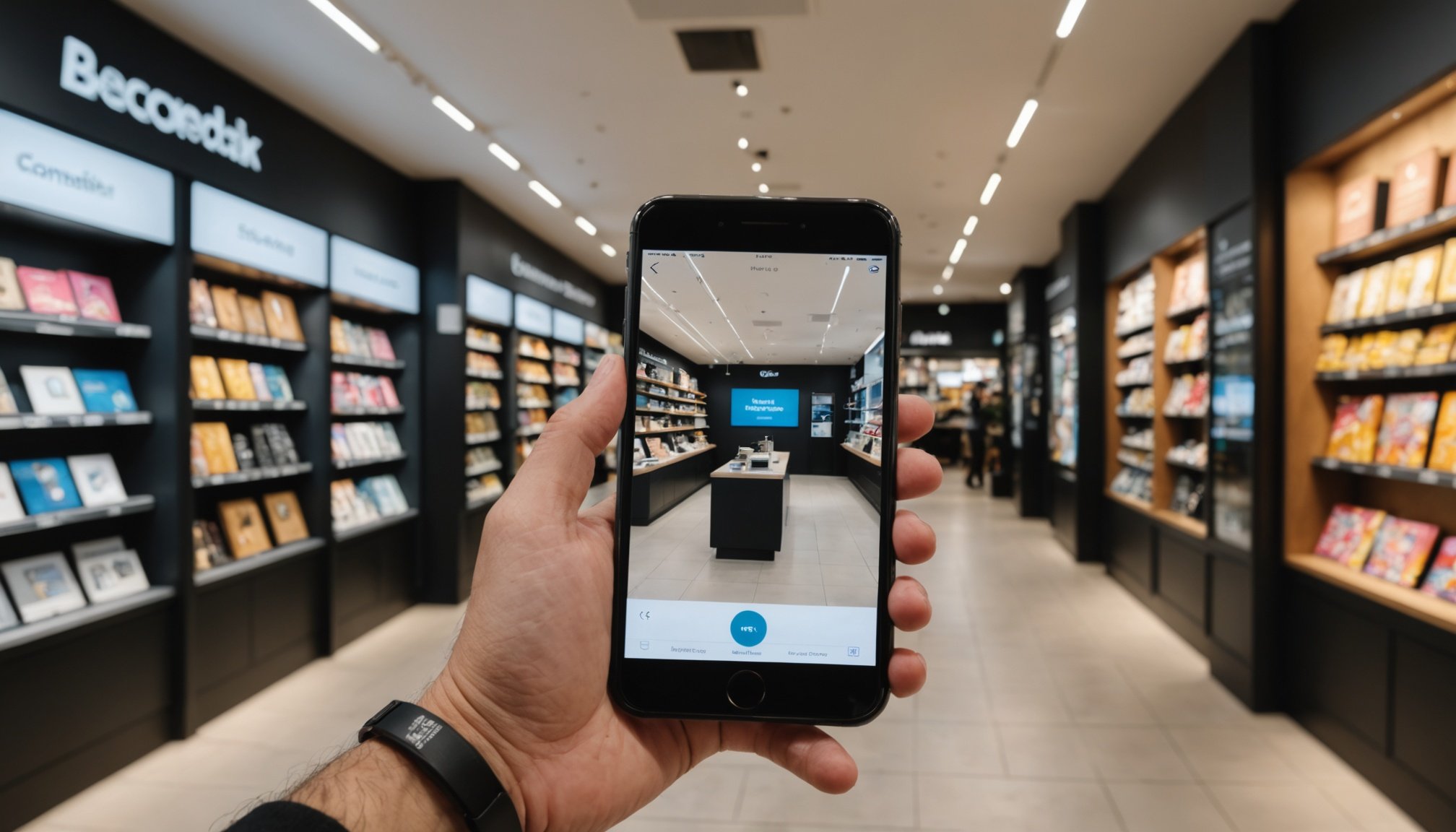Understanding Augmented Reality in Retail
Augmented Reality (AR) is a transformative technology used in retail innovation that overlays digital content onto the physical world, enhancing the customer’s shopping experience. In the UK, the current landscape of AR usage in the retail sector is burgeoning, with brands experimenting with various AR applications to engage shoppers. By seamlessly integrating technology into their operations, retailers provide interactive experiences that bridge the gap between e-commerce and in-store purchases.
Key benefits of implementing AR in retail include enhanced customer engagement, attraction, and retention. AR technology enables consumers to visualize products in their environment before purchasing, reducing uncertainty and returns. Furthermore, retailers using AR applications can facilitate personalized shopping experiences, offering tailored recommendations that align with consumer preferences.
Also to see : Effective Strategies to Boost Customer Loyalty for UK Subscription Services
In addition to improving the shopping journey, augmented reality also contributes to significant operational advantages. These include improved retail innovation through new marketing strategies and efficient inventory management, as AR can help assess product performance and consumer behavior insights in real-time. Embracing AR tools not only bolsters sales but also strengthens brand loyalty by creating memorable and differentiated experiences for customers.
Successful AR Implementations in UK Retail
In the UK, case studies in AR usage within the retail sector demonstrate its transformative impact. Many retailers have embraced AR to revolutionise customer interactions and set new standards for retail innovation.
Topic to read : Mastering Crowdfunding: The Definitive Guide to Launching a Winning Campaign for Your UK Startup
Case Study: Major Retail Brand Utilizing AR
Consider a prominent fashion retailer that has integrated AR into its mobile app, allowing customers to virtually try on clothes. This has not only streamlined the shopping process but also reduced return rates—a crucial factor in online sales. By merging AR applications with customer data, the brand tailors its inventory and marketing strategies effectively.
Case Study: Small Retailer Achieving Growth with AR
Smaller retailers have also found success with tailored AR applications. A boutique furniture store, for example, enables shoppers to visualise furniture in their own homes through an AR app. This simple yet effective strategy has significantly enhanced customer trust and satisfaction, driving growth in both foot traffic and online sales.
Insights from Successful AR Campaigns
These AR success stories highlight the seamless integration of digital and physical shopping. Retailers have observed increased customer engagement and sales, proving that strategic AR implementation can level the playing field across businesses, regardless of their size.
Effective AR Strategies for Retailers
To successfully integrate AR into retail strategies, retailers must first set clear objectives for their AR applications—whether enhancing engagement, boosting sales, or innovating their marketing efforts. The focus should be on aligning AR tools with brand goals, ensuring they offer genuine value.
Step-by-step integration begins with market research to understand consumer preferences and pain points. Next, develop a user-friendly AR platform that’s accessible on various devices, ensuring inclusivity. Conducting pilot tests can refine these applications, gathering valuable feedback from early users.
To enhance customer engagement, AR techniques must be interactive and immersive. Examples include virtual try-ons or in-store navigation aids, tailored to the specific needs of the target audience. Effective AR uses can transform passive browsing into dynamic shopping experiences, encouraging deeper connections with the brand.
Using AR for promotional campaigns can creatively showcase new products. Incorporating interactive adverts and virtual pop-up shops can be highly effective, capturing attention and driving interest. Ultimately, the goal of any AR strategy is to create memorable interactions that differentiate a brand from its competitors, leveraging AR applications to captivate and delight shoppers.
Benefits of Augmented Reality for Retail
Augmented reality (AR) offers transformative benefits in retail, primarily by enhancing the customer shopping experience. It allows consumers to interact with products in an immersive manner, leading to informed purchasing decisions. Shoppers can virtually try on products, assess how they fit into real-world settings and even customise these experiences to personal preferences. This capability reduces buyer hesitation and significantly decreases product returns.
Increased sales are another significant advantage tied to AR usage. By offering innovative and engaging experiences, retailers can capture consumer interest and drive purchasing behaviour. Recent studies show a marked increase in sales for retailers incorporating AR, with the technology serving as a catalyst for conversion rates. Furthermore, the personalisation offered by AR translates to higher customer retention, as consumers are more likely to return to brands that offer meaningful interactions.
Beyond immediate sales impacts, AR provides valuable consumer insights, allowing brands to track engagement and preferences. These analytics can inform business strategies, ensuring that companies remain agile and customer-focused. Further, AR fosters brand loyalty by providing memorable experiences that resonate with consumers, encouraging long-term brand commitment.
Challenges of Implementing AR in Retail
Augmented Reality (AR) has the potential to revolutionize retail, but its integration is not without challenges. Retailers often encounter significant obstacles when adopting this innovative technology. A primary concern is the technical challenge of ensuring AR applications function seamlessly across various devices. Incompatibility or glitches can frustrate users, diminishing their shopping experience and impacting the brand’s reputation.
Financial hurdles also play a significant role. Developing and maintaining AR platforms can be costly, particularly for smaller retailers with limited budgets. Initial investment in technology and ongoing updates require careful financial planning.
Moreover, there is the challenge of adoption amongst consumers. Even with a perfect AR application, if customers are not willing or aware of its use, the benefits cannot be realized. Educating consumers and encouraging them to engage with AR tools is crucial.
To overcome these issues, strategies like phased implementation and partnerships with technology providers can prove beneficial. Retailers could begin by offering simple AR experiences and gradually expand as user comfort and interaction grow. Engaging user-friendly design and targeted marketing can further bolster consumer acceptance and widen the successful use of AR.
Future Trends in AR for Retail
Augmented Reality (AR) in retail is on the brink of profound innovation, driven by retail innovations and evolving consumer expectations. Emerging trends are pushing boundaries as AR applications become more sophisticated and integrated.
For instance, AI-powered AR tools are predicted to create hyper-personalised shopping experiences, blending AI insights with AR’s immersive nature. This fusion enhances customer interaction by suggesting products based on real-time analytics and previous preferences. Such synergy positions retailers to stay ahead in a competitive landscape.
Adaptive AR applications leveraging advancements in machine learning could transform how retail environments engage consumers. Retail innovations like these personalise shopping experiences further, appealing directly to consumer behaviour shifts towards unique and convenient experiences.
Another futuristic facet includes developing AR in wearable tech, allowing shoppers hands-free interaction with digital enhancements in-store or at home. Additionally, AR and virtual reality (VR) convergence continues, promising rich multi-sensory shopping journeys.
Ultimately, the future of AR in retail hinges on consumer adoption and preference. As these trends unfold, retailers must be agile, embracing new technologies for retail innovation to foster deeper engagements and sustained growth in a rapidly advancing market.
Conclusion and Recommendations
As the integration of augmented reality (AR) into retail expands, adapting to this evolving technology is crucial. Retailers should focus on best practices for AR implementation to maximize its benefits. This includes prioritizing compatibility across devices and ensuring the AR applications are user-friendly and intuitive. Developing an incremental rollout strategy can aid in managing implementation challenges, such as technical difficulties and consumer adoption.
Final thoughts emphasize the potential for AR to reshape the retail landscape. Retailers must remain agile, continuously monitoring trends and consumer behaviours to keep up with innovations. By committing to ongoing learning, they can leverage AR to create immersive and engaging shopping experiences, thus fostering brand loyalty and driving sales.
Retailers are encouraged to embrace AR by collaborating with technology providers, which can alleviate both technical and financial hurdles. Seeking expert guidance ensures that AR tools align smoothly with brand objectives and consumer expectations.
Finally, establishing a feedback loop with customers can provide invaluable insights. This will help in refining AR initiatives, tailoring them to enhance customer satisfaction and optimize marketing strategies, ensuring sustained success in the evolving retail sector.











